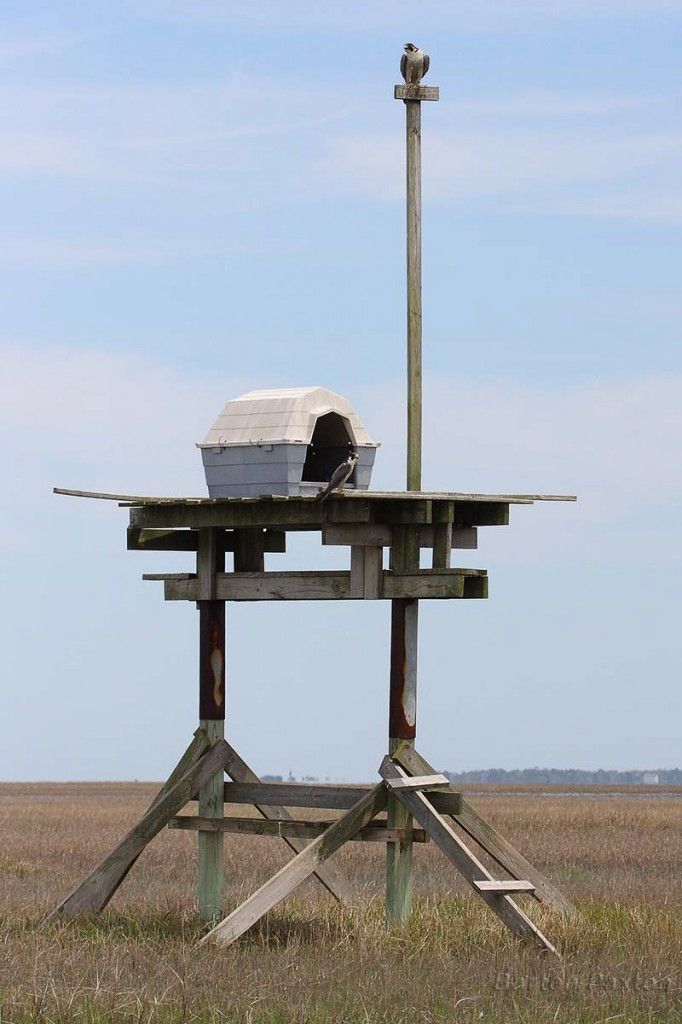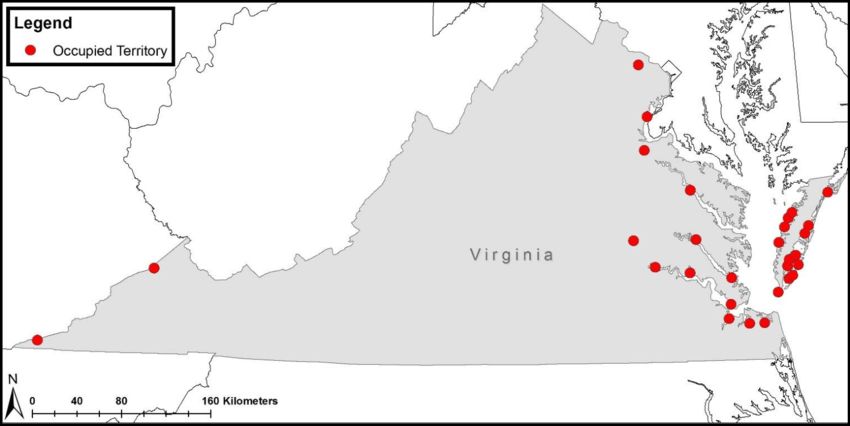
23 July 2024
The Center for Conservation Biology (CCB) has been monitoring Virginia’s peregrine population every year since the late 1970s. Because they track individual adults, they know who breeds where and when they go missing. This year the news was disturbing. Peregrine adult turnover statewide more than doubled in one year to a new rate of 40%. Forty percent of the adults disappeared (died) and were replaced by a new bird.
The only good news is that the high rate is skewed by the incredibly high turnover of 63.2% on the Eastern Shore while the rest of the state was 12.5%. The bad news is that the Eastern Shore has the highest concentration of breeding peregrines in Virginia.
The map below, from Virginia peregrine falcon monitoring and management program: Year 2017 report on ResearchGate, shows peregrine territories in 2017. There are more territories nowadays but the relative concentration remains.

Recoveries of dead and dying peregrines indicate the culprit is avian flu, a problem experienced in other states as well.
Why is avian flu taking a toll on the coast but not inland? Read why in this blog at the Center for Conservation Biology.
UPDATE, September 2024: Both U.S. Coasts are seeing serious peregrine declines: Audubon Magazine describes peregrine declines on U.S. coasts and the likely culprit, avian flu: Why Are Peregrine Falcon Numbers Falling in the United States Again?
p.s. I have not heard of these peregrine declines occurring in Pennsylvania which is mostly an inland state. Perhaps our turnover rate mirrors Virginia’s inland statistics.
In 2023, out of 35 breeding pairs in Virginia statewide, 26 were on the coastal plain.